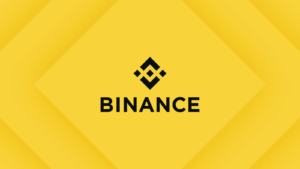The crypto derivatives market is booming, and platforms like Binance and Bybit have positioned themselves as two of the top choices for traders. Both offer attractive features such as high leverage, advanced trading tools, and competitive fees. However, they cater to different types of traders depending on their needs and experience levels. In this article, we’ll compare Binance and Bybit to help you decide which platform is better suited for your derivatives trading journey.
Overview of Binance and Bybit
Binance is the largest cryptocurrency exchange globally, offering a full suite of services that includes spot trading, staking, lending, and derivatives trading through Binance Futures. Launched in 2019, Binance Futures quickly gained traction for its extensive selection of trading pairs and high leverage options, reaching up to 125x on select contracts.
Bybit, founded in 2018, is a derivatives-focused platform designed to provide a streamlined experience specifically for traders involved in perpetual futures contracts. Bybit offers leverage of up to 100x on major cryptocurrencies such as Bitcoin, Ethereum, and XRP. The platform is known for its fast execution speeds, robust infrastructure, and user-friendly interface, making it popular among both beginners and experienced traders.
While both platforms offer derivatives trading, the differences in their approach and focus can impact your trading experience significantly.
Trading Products and Market Coverage
One of the key differences between Binance and Bybit is the variety of trading products offered. Binance Futures provides a comprehensive range of contracts, including USDT-margined, coin-margined, perpetual, and quarterly futures. The platform supports over 100 trading pairs, allowing users to trade not only major cryptocurrencies but also a wide selection of altcoins.
Bybit, on the other hand, focuses on perpetual contracts and offers fewer trading pairs—around 70 at the time of writing. The platform primarily emphasizes high-liquidity assets like BTC/USDT and ETH/USDT, which ensures faster order execution and reduced slippage during volatile market conditions.
If you are looking to diversify your trades across many assets, Binance might be the better option. However, if you prefer trading major cryptocurrencies with deep liquidity, Bybit’s narrower focus could be advantageous.
Trading Fees
Fees are a crucial consideration for traders, especially those who make frequent trades. Binance Futures charges a maker fee of 0.02% and a taker fee of 0.04%, with the option to reduce fees by holding Binance Coin (BNB). Traders can save up to 25% on fees when paying with BNB, making Binance a cost-effective platform for high-volume traders.
Bybit’s fee structure is slightly different. The platform charges a maker fee of 0.01% and a taker fee of 0.06%. While it does not offer a token-based discount like Binance, Bybit provides volume-based discounts to traders who reach certain trading milestones. For those who frequently place limit orders, Bybit’s lower maker fee can be appealing.
Traders who prioritize fee discounts through a native token may find Binance more attractive, while those focused on minimizing maker fees might prefer Bybit.
Leverage and Risk Management
Both Binance and Bybit offer high leverage, allowing traders to control larger positions with a relatively small amount of capital. Binance provides up to 125x leverage on certain trading pairs, while Bybit offers up to 100x leverage on major pairs.
While high leverage can amplify potential gains, it also increases the risk of liquidation. Both platforms provide essential risk management tools, such as stop-loss and take-profit orders. Binance also employs a multi-tier margin system that adjusts leverage based on the size of a trader’s position to minimize risk. Bybit’s risk management system is similarly robust, designed to help traders protect their capital during volatile market conditions.
Traders who want access to the highest possible leverage may lean towards Binance. However, Bybit’s leverage offering is still competitive and may provide a more stable trading environment for those who prioritize risk control.
User Interface and Trading Experience
The user interface is a critical factor in determining how efficiently traders can manage their positions. Binance’s interface is feature-rich and integrates various services, including spot trading, staking, and derivatives. While this provides users with a full ecosystem, it can feel overwhelming for beginners due to the sheer number of options and features.
Bybit, in contrast, offers a clean and intuitive interface designed specifically for derivatives trading. The platform focuses on providing a fast and efficient trading experience, with streamlined access to key features like order placement, risk management, and account monitoring. Many traders appreciate Bybit’s simplicity, which allows them to focus on executing trades without unnecessary distractions.
Experienced traders who require extensive customization and access to multiple services may prefer Binance. On the other hand, those who prioritize simplicity and speed might find Bybit’s interface more appealing.
Liquidity and Execution Speed
Liquidity is essential for ensuring that trades can be executed quickly and at the expected price. Binance, as the largest exchange in the world, has deep liquidity across its trading pairs. This is especially beneficial during periods of high market volatility, where large trades may otherwise face significant slippage.
Bybit also provides strong liquidity, particularly for its core trading pairs. The platform’s infrastructure is designed to handle high-frequency trading and large order volumes without compromising execution speed. For traders who focus primarily on major cryptocurrencies like Bitcoin and Ethereum, Bybit’s liquidity is more than sufficient.
Traders dealing with large order sizes or seeking access to a wide variety of altcoins may benefit from Binance’s deeper liquidity pool. However, for those trading high-volume pairs, Bybit’s execution speed and liquidity are highly competitive.
Security and Customer Support
Both Binance and Bybit take security seriously, implementing multiple layers of protection to safeguard user funds and data. Binance employs two-factor authentication (2FA), anti-phishing codes, and cold wallet storage for the majority of user funds. Additionally, Binance has established the Secure Asset Fund for Users (SAFU), which acts as a financial reserve in case of security breaches.
Bybit has also maintained a strong security track record. The platform uses cold wallet storage for most assets and offers similar security measures, including 2FA and withdrawal whitelists. Bybit is particularly praised for its responsive customer support, providing 24/7 live chat assistance and multilingual support.
If customer support is a priority, Bybit may have the edge. However, both platforms offer robust security measures to protect traders.
Conclusion
Choosing between Binance and Bybit ultimately depends on your trading style, goals, and preferences. Binance is ideal for traders who want access to a wide variety of assets, advanced features, and fee discounts through BNB. Its extensive ecosystem appeals to experienced and active traders looking to diversify their investments.
Bybit, on the other hand, excels in providing a focused, user-friendly experience tailored to derivatives trading. It’s a great option for those who prioritize simplicity, fast execution, and reliable customer support. While it offers fewer trading pairs, its core markets maintain strong liquidity and efficiency.
Evaluate your needs carefully to determine which platform aligns with your trading strategy. Regardless of your choice, remember to trade responsibly and manage your risks effectively. Happy trading!
